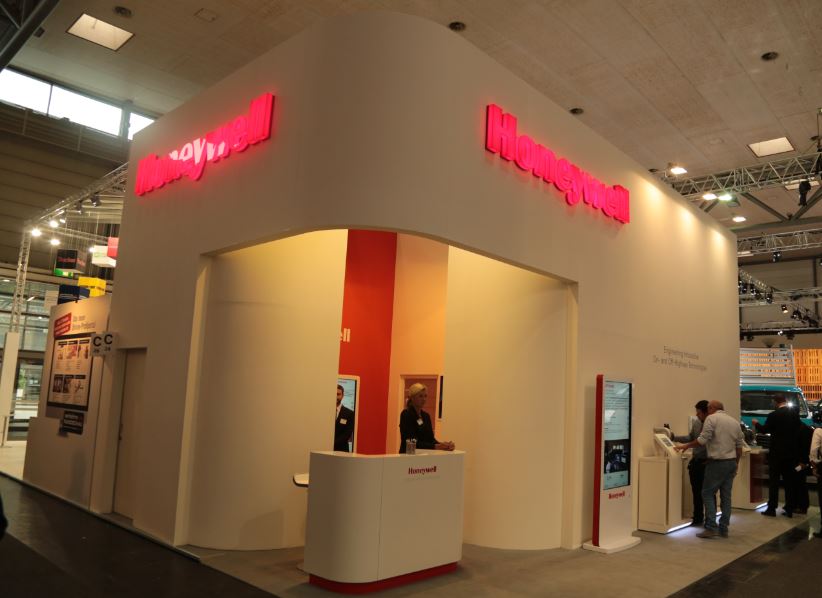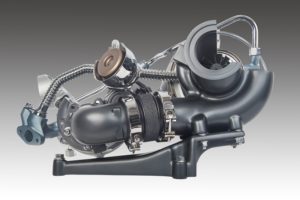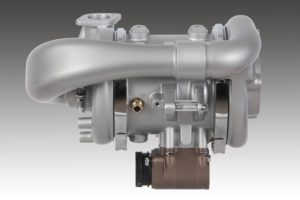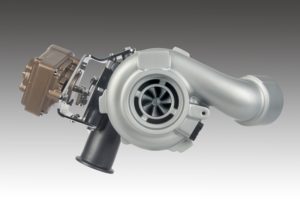Honeywell Transportation Systems is displaying some of its key turbocharger technology for commercial vehicles in Europe and around the world at IAA Hannover 2016. Honeywell provides many turbo technologies that are the industry standard for both on and off-highway powertrains. It offers tailored solutions for differentiated customer needs in helping prepare manufacturers for even more stringent regulatory environments. The company is bringing to market a new generation of technologies aimed at further reducing carbon dioxide emissions and improving fuel economy in the years ahead. As part of Honeywell Aerospace, Transportation Systems has developed several key turbocharger options that aid the delivery of enhanced performance and efficiency including ball bearing applications for faster transient response and reduced fuel consumption, and customized titanium wheels for increased durability in the most severe applications. In addition to its field-proven and comprehensive range of turbo technologies, Honeywell is also providing a suite of software solutions aimed at improving productivity by helping reduce fuel consumption, increasing power density and improving vehicle uptime.
“Honeywell is continuing to invest significantly in developing new technologies supporting commercial vehicle manufacturers around the world. Honeywell has an industry-leading portfolio of turbocharging architectures that can be customized to meet the specific needs of varying powertrain strategies required by manufacturers and regulatory agencies for addressing fuel economy and emissions. With more than 60 years of automotive boosting experience and the research and development resources of Honeywell Aerospace behind us, Honeywell Transportation Systems will continue to pace the industry in its efforts to become cleaner and more energy efficient. Our automotive software and electric boosting products are the next wave of enablers for achieving more stringent global targets, while making fleet owners more productive and efficient” said Craig Balis, Chief Technology Officer, Honeywell Transportation Systems.
Technical Innovations on Display
Serial Two-Stage Turbocharger
Already a leading industry provider of fuel saving serial two-stage turbocharger technologies, Honeywell recently launched its newest generation, which moves away from matching two single-stage turbochargers in favour of true two-stage turbocharger design with a dedicated and optimized aerodynamic package. The specific two-stage aerodynamic design allowed Honeywell engineers to use a smaller diameter turbine wheel in the high pressure turbo to improve efficiency. Similarly, the diameters of both compressor wheels in the high pressure and low pressure turbos have also been reduced and redesigned to increase peak efficiency and improve transient response while targeting the specific operating range needs of the vehicle. With up to a 5:1 pressure ratio and a dual wastegate port, Honeywell’s newest serial two-stage application with bespoke aerodynamics is launching on the new MAN 12.4L engine.
Axial Two-Stage System
Honeywell has developed an ultra-high efficiency serial two-stage system with the added enhancement of an axial turbine wheel in the low pressure turbo. Coupled with the sector-divided fixed vane nozzle high pressure turbine, this serial two-stage system represents optimum performance for heavy duty long haul trucks needing fuel efficiency and CO2 emissions compliance. Honeywell developed this system in part due to a European Union request for technology targeting reductions in CO2 emissions which could be implemented by 2020. The new system has a number of features contributing to its overall turbo efficiency of nearly 64 percent with a 6 percent reduction in fuel consumption on a typical road test duty cycle.
Air System for Turbo Compounding
Honeywell has developed a new high efficiency turbo featuring a sector-divided turbine housing with fixed vane nozzles resulting in better exhaust flow distribution; a vaned diffuser to maximize compressor performance supporting optimal engine performance for road load needs; and ball bearings for industry-leading efficiency and response. The new design supports turbo compounding powertrains using a waste heat recovery system in the form of a secondary turbine extracting additional energy from exhaust gasses and applying it directly to the driveline further improving fuel economy.
This system recently launched in North America given the region’s typically higher speeds and road loads. Honeywell expects continued global adoption including Europe as the tailored system achieves the efficiencies needed to improve fuel economy and help support robust and innovative powertrain compounding strategies.
Honeywell Automotive Software (HAS)
Honeywell is also featuring its OnRAMP Design Suite, Integrated Vehicle Health Management and Cybersecurity software tools at Hannover. The OnRAMP Design Suite for powertrain controls approaches emissions from a systems perspective in helping manufacturers optimize powertrains for fuel economy and CO2 reductions, reduces bill of materials costs by up to $100 USD an engine through physical sensor replacement, and save three to six months in engine calibration timing. The HAS team group is also using years of existing experience within Honeywell Aerospace to bring Integrated Vehicle Health Management to the automotive industry. With model based diagnostics and prognostics tools, Honeywell’s solutions can eliminate trial and error warranty issues by reducing “no trouble found” occurrences an estimated 50 percent at an estimated annual savings of more than $100 million USD in high volume segments. Honeywell has also developed an innovative and integrated automotive cyber security system to offer manufacturers a real-time ‘Detect, Report, and Protect’ cybersecurity solution.



